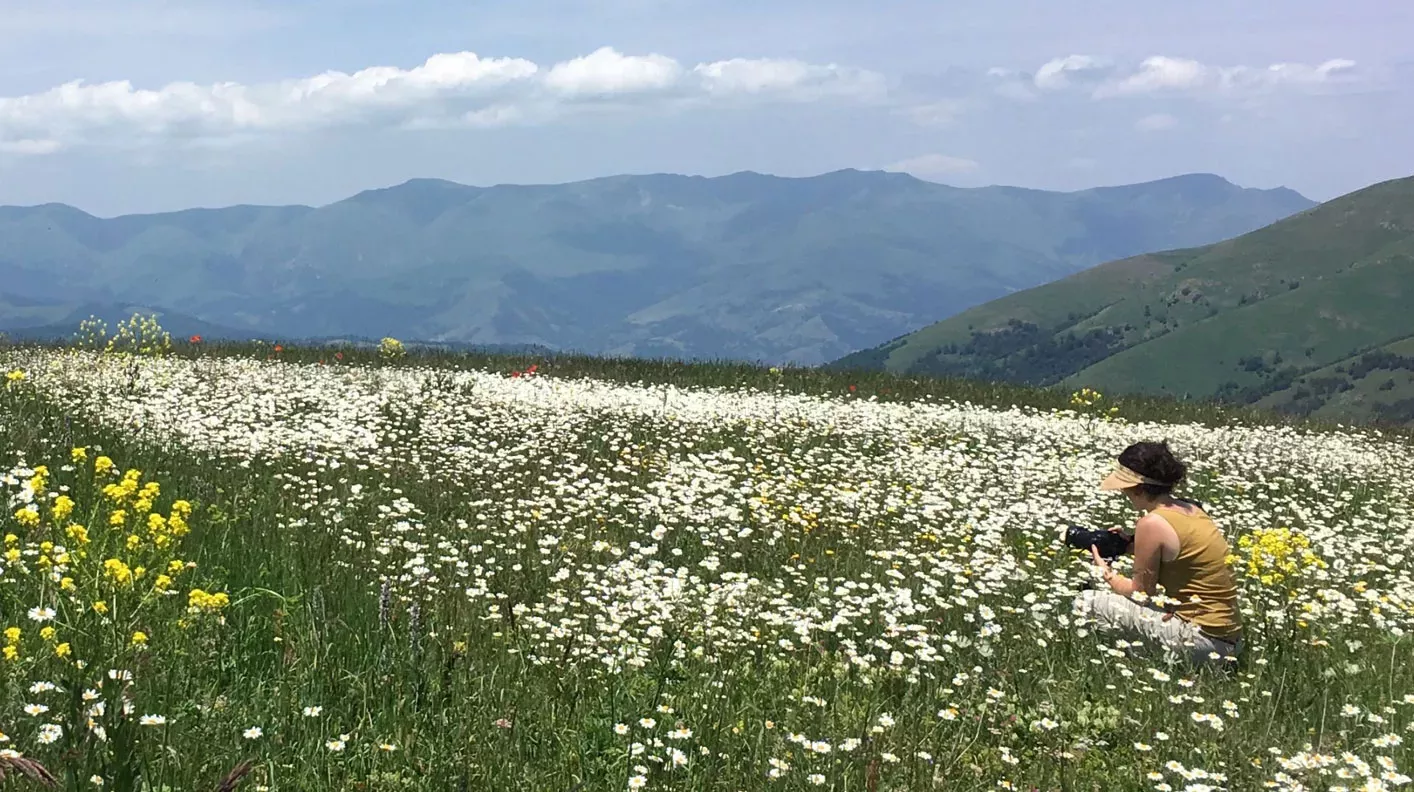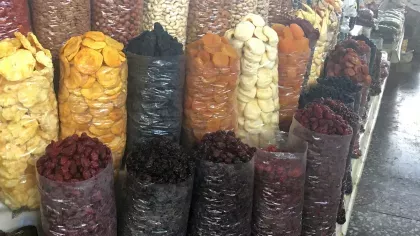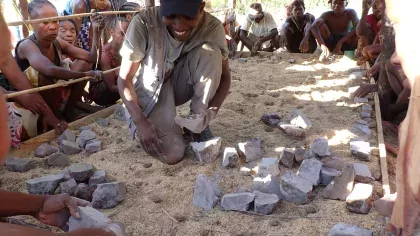28 February 2024
Top 4 Armenian orchids
These are our favourite orchid species from years of conservation partnership in Armenia

Orchids among the largest and most diverse of plant families. They bring massive value to the ecosystems they’re found in and people who use them in many ways for income.
This is especially true here in the Caucasus, where through our Armenia-based conservation project we’ve been working to protect the plant species most at risk of extinction in this unique part of the world.
We are Aisyah (RBG Kew) and Astghik (Nature Heritage). Our conservation project has been a journey spanning multiple years for both of us. These are some of our favourite orchids we’ve seen along the way.

1) Dactylorhiza urvilleana (Steud.) H.Baumann & Künkele
Found across north and northeast. Türkiye to the Caucasus and north Iran, D.urvilleana is one of my favourite species to find in the field. Not only does it have these showy (almost indecent) flowers and distinctive speckled leaves, but they're also so easy to spot when you’re seed collecting due to their extremely long floral bracts that stay pretty much intact when in pod. The bracts hang down like ribbons!
They grow in marshy areas and along streams, so are good indicators of water or damp conditions. The seeds we’ve collected for this species are now stored in the Millennium Seed Bank, where we can better understand the conditions they need to grow and keep the species alive should it ever decline in the wild.
I first encountered this species on my first ever trip to Armenia in 2016 while we stopped for a quick picnic in between seed collecting and every year since I’ve gone back to that site to see the population in bloom. Every time I see this species it reminds me of being in the sunshine and sharing food by the beautiful meadows of the Caucasus. Absolutely idyllic!


2) Epipactis helleborine (L.) Crantz
This one can’t be any more different from the first! Native to NW. Africa, Europe and across to China, the species is usually found in beech forests rather than open marshlands. The flowers are small but intricate and remind me of tropical orchids – something almost exotic in a very temperate setting.
If you look closer, you can see the intricate design of the flower: perfectly formed to attract pollinators and ensure successful pollination, as the lower labellum is coloured red, opposed to the rest of the petals which are typically green.
 2.JPG.webp?itok=0cc2f4D8)

3) Anacamptis coriophora (L.) R.M.Bateman, Pridgeon & M.W.Chase
This is another meadow species, a lovely little orchid that grows in large clumps, so if you find one, you’ll sure to find loads! Although, finding that one is not an easy task when it grows amongst thickets of wildflowers and stipa grasses.
Their distinctive pods make this kind of swirl pattern, which when ripened, dries and uncurls to reveal thousands of seeds that then get blown away by the wind.


4) Steveniella satyrioides (Spreng.) Schltr.
Only one species is known within this genus, Steveniella satyrioides, which is considered endangered in Armenia. Its rarity is a key part of this story.
The Armenian team went out to look for populations of orchids around the Yenokavan community in northern Armenia. They knew of one location there where several species of orchids grow.
They worked hard to look for and ID the different species despite battling terrible torrential rains. The rains worsened though, and the team decided to finish early. Most of them had already settled in the car, and were waiting for Anush, the lead collector.
After waiting for about 15 minutes, the rest of the team started to worry and decided to go look for her. It turned out that Anush found a small population of Steveniella satyrioides by chance and had gotten so excited that she stayed in the pouring rain, taking photos and studying this species, completely ignoring the weather.
That enthusiasm also infected the rest of the team and they all got out of the car and started taking pictures of this extremely rare species. Shows the utmost dedication and love the team has for their native orchids!

.JPG.webp?itok=QOoT1jCa)
Conserving Armenia’s orchids
The orchids you’ve seen above and the many other species making their home in the Caucasus need our help. Changing landscapes in the country raise questions about how long their habitat might be safe, and we don’t yet fully understand how the collection of wild plants for trade may be affecting populations.
Our partnership between Kew and Nature Heritage has seen us travel across Armenia identifying species and collecting seeds for preservation, working with people to build knowledge on threats and solutions, and supporting government to better understand the trade of wild orchids.
What we learn here will help us conserve orchids and other plants across the world. It’s no easy job, but it’s one we’re dedicated to. Here’s one final story to give you a flavour.
In August 2022, we journeyed out to collect orchid seeds as they started to ripen. It was a busy period for our team, so I (Astghik) decided that I should go out into the field to gather the orchid seeds for the project. My daughter was just three months old, so I had to take her with me. We had a wonderful harvest, and my daughter felt wonderful.
In the evening, when we finished collecting seeds and had to go back, our car had problems. We were in the forest, a few kilometres away from any settlements, so we had to call a tow truck. The tow truck that arrived was very old, and the roads were scary.
Our team was very nervous, especially for the little one, but she was so calm and so happy following the road that it cheered us up to return home in high spirits.






